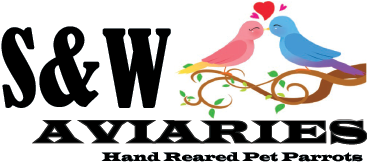Toys for your Parrot
Toys are a great way to keep your parrot entertained when you’re not around. Providing foraging toys will also help reduce boredom related behaviour problems like screaming or feather plucking.
Foraging Toys: In the wild parrots spend hours a day foraging for food; this is a natural behaviour you can replicate by offering toys designed to keep them stimulated for hours. Rotating foraging toys will help keep them guessing, swap out different foraging toys every week.
What to look out for
Toys should never have painted surfaces or use glues to hold pieces together. There is the toxicity aspect, but even if non-toxic paints or food-grade glues are used, there is another problem that is just as serious. Paint and glues are applied to surfaces. They don’t soak into surfaces like dyes do; they dry on top of a surface. This is a part of the toy that might attract the attention of an observant parrot during play. While our fingers are not well designed to removed glue or paint, the parrot beak makes short work of it. If these chips are swallowed, they can be deadly even if they are non-toxic in nature. They can get lodged in the digestive system causing a serious blockage. Most dyes are soy based (vegetable) and are a safe colorant choice.
All metal hardware should be Stainless Steel or Nickel Plated. The hardware pieces should not be removable or indigestible. Also, they should not have crevices or be shaped in ways that a parrots’ beak or toenail can get caught or stuck in it.
Try to avoid or replace fibre rope toys. Replace any fibre rope toys with Stainless Steel chain.
Do Not Use fibre “Happy Huts”, instead opt for more natural products like Coconut Shells or Seagrass Mats. Parrots are known to chew on rope, and fibres end up filling their crop which may result in death. Seagrass Mats are a great item to turn into toys. They are safe because they are made from natural materials. Some parrot owners even use shredded paper for their birds to play with.
